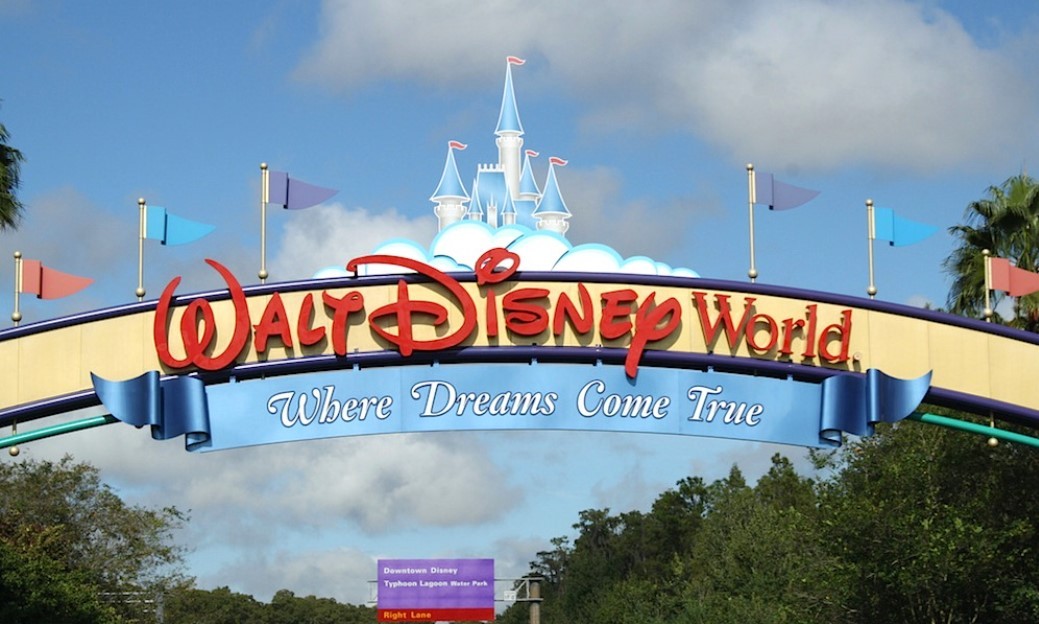Nuclear Sites in Iran: Latest Discoveries, Strategic Threats & Military Options
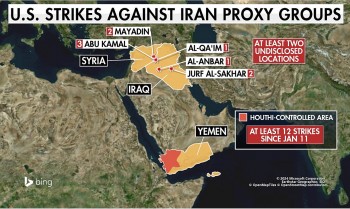 Possible U.S. Strike on Iran: What It Means and Where It Could Lead (Update) Possible U.S. Strike on Iran: What It Means and Where It Could Lead (Update) |
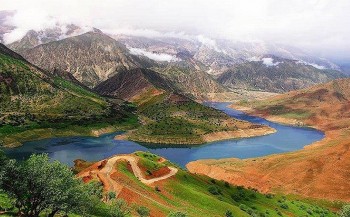 Inside Iran’s Nuclear Fortress Fordow: The Truth About the Mountain-Deep Centrifuge Halls Inside Iran’s Nuclear Fortress Fordow: The Truth About the Mountain-Deep Centrifuge Halls |
June 2025 witnessed one of the largest Israeli air campaigns in history against Iranian nuclear assets, while the U.S. weighs the deployment of bunker-busting ordnance. This report details Iran’s known and newly identified nuclear infrastructure, analyzes recent Israeli strikes, and explores the potential for U.S. intervention.
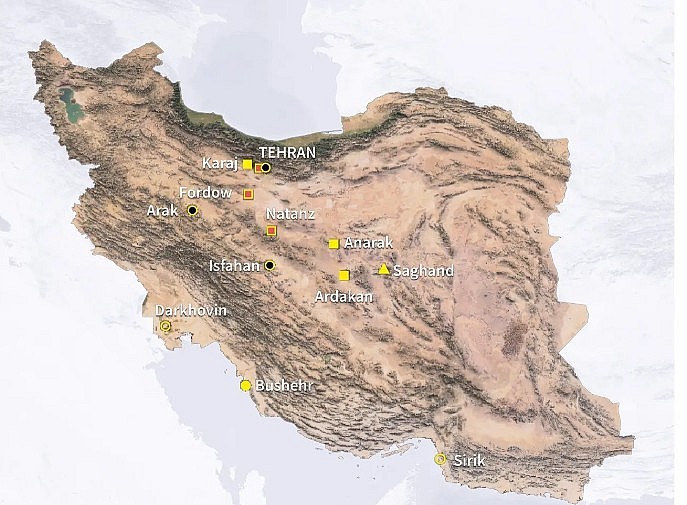 |
| Nuke Sites in Iran |
1. Iran’s Nuclear Landscape: Existing Sites
Natanz Fuel Enrichment Plant
Located in central Iran, Natanz remains the most extensive and well-known nuclear facility in the Islamic Republic. Its underground Fuel Enrichment Plant (FEP) lies beneath layers of concrete and earth, sheltering advanced IR-4 and IR-6 centrifuges. The above-ground Pilot Fuel Enrichment Plant (PFEP) has been used for experimental enrichment and as a testing ground for newer centrifuge models.
In recent months, Iranian engineers have reportedly completed an additional underground expansion referred to as the "Pickaxe Mountain" project, enhancing the site's survivability against bunker-busting munitions. Satellite imagery from international intelligence agencies shows heavy excavation equipment and reinforced tunnel entrances, suggesting preparations for a deep-hardened enrichment center.
The plant is believed to produce uranium enriched up to 60%, just below the 90% weapons-grade threshold. If this trend continues, Natanz could be capable of reaching breakout capacity within weeks, according to some nuclear watchdogs. Its central location and fortified structure make it a prime target in any preemptive strike scenario.
Fordow Fuel Enrichment Plant
Discovered by Western intelligence in 2009, Fordow is located near Qom and embedded deep into a mountain, making it nearly impervious to conventional airstrikes. Originally intended for peaceful research, Fordow now operates advanced centrifuge cascades, including IR-6s, enriching uranium up to 60%. The facility is known for its resilient design and has become a key symbol of Iran’s deterrence strategy.
IAEA inspectors detected enrichment particles up to 83.7% U-235 earlier this year—raising global alarm. Iranian authorities claimed it was an accidental spike, but the discovery cast new doubts on Iran’s intent. Recent developments suggest that Iran has begun installing additional IR-9 centrifuges at the site, significantly boosting its efficiency.
Reports also suggest that Iran has constructed auxiliary control centers and tunnel networks near Fordow, potentially to store enriched material or protect backup operations. This evolving infrastructure has prompted military planners to consider next-generation bunker-busters to target such deeply buried assets.
Isfahan Nuclear Technology Center
Serving as a multipurpose hub, Isfahan houses conversion facilities that transform yellowcake into uranium hexafluoride (UF6), the feedstock for centrifuge enrichment. It also serves as a manufacturing and storage center for centrifuge components. The site includes training academies, heavy engineering complexes, and laboratories for material sciences, making it one of Iran’s most comprehensive nuclear installations.
The recent Israeli airstrikes targeted the conversion halls. While damage was confirmed, much of the underground infrastructure appears to have survived. Some satellite images show craters in administrative and logistics buildings, while Iran has reportedly shifted operations deeper underground. International agencies believe Iran is continuing enrichment-support activities at Isfahan at near-full capacity.
Arak Heavy Water Reactor
Located near Khondab, the Arak IR-40 reactor is capable of producing plutonium suitable for weapons if fully operational. After modifications under the JCPOA, it was repurposed to produce medical isotopes. However, Western analysts suspect Iran has resumed plutonium production, especially following the removal of key surveillance equipment and monitoring access for IAEA inspectors.
The IR-40's heavy water production facility is also under scrutiny. Heavy water can moderate plutonium-producing reactions, and a surplus might indicate intentions beyond medical research. Arak was struck twice during the June 2025 air campaign. Damage assessments suggest peripheral facilities were hit, but core structures and reactor shielding remained largely intact. Reconstruction efforts appear swift, with Iranian state media broadcasting footage of "continued peaceful operation."
2. Newly Disclosed Nuclear Facilities
Third Enrichment Facility
In the wake of renewed censure from the International Atomic Energy Agency (IAEA), Iranian officials announced the development of a third enrichment site. The unnamed site is said to be "deep underground" and “immune to bunker-busting bombs.” Western analysts believe the site may be under construction in central Iran, near the Zagros mountain range. Early satellite imagery shows multiple tunnel entrances and fortified bunkers.
While Iran claims the site will adhere to peaceful objectives, critics point to its strategic location and architectural layout as consistent with military-grade secrecy. U.S. and Israeli intelligence agencies suspect this new site may be part of a broader dispersal strategy to mitigate the vulnerability of Natanz and Fordow.
Rainbow Site (Semnan Province)
Leaked satellite imagery and cyber intelligence uncovered the existence of the "Rainbow Site," a covert nuclear installation camouflaged within an industrial complex run by the Diba Energy Siba company. The facility is believed to be engaged in tritium extraction—a crucial component in thermonuclear weapons.
The presence of heavy shielding, reinforced containment chambers, and non-standard piping suggests activities far beyond peaceful research. U.S. intelligence sources suggest the Rainbow Site is also testing implosion devices, often used in advanced weapon design. Iranian officials deny its existence, calling the reports a fabrication, though international watchdogs have requested access.
The “Desert Plan” Network
A network of underground bunkers, tunnels, and testing chambers in Semnan province—dubbed the “Desert Plan”—has been exposed by satellite data and human intelligence. These facilities reportedly handle warhead assembly and possibly field testing of delivery systems, such as long-range ballistic missiles or hypersonic glide vehicles.
This network features its own drone defense perimeter, underground missile silos, and independent power and communication lines, indicating long-term military use. The existence of decoy structures and heat suppression systems suggests advanced engineering designed to mislead surveillance efforts.
Western military analysts believe the Desert Plan sites are interconnected via underground rail or tunnel transport, offering Iran rapid logistical movement between nuclear and military complexes in the event of conflict.
Undeclared Sites: Turquzabad, Marivan, Varamin
These sites have been under investigation since the discovery of uranium particles by IAEA inspectors. Despite Iranian resistance, ongoing investigations suggest past nuclear activity inconsistent with peaceful claims.
At Turquzabad, investigators found containers and storage units stained with nuclear residue. Marivan, long rumored to be a military detonation test site, has signs of explosive chambers and tampered topsoil layers. At Varamin, analysts suspect that warhead metallurgy experiments were conducted under civilian cover.
Iran denies wrongdoing at all three sites and has refused full IAEA access. However, the pattern of concealment and obstruction has only deepened concerns among non-proliferation experts.
3. Enrichment Capacity & Military Thresholds
Iran’s uranium enrichment capacity has grown significantly in both scale and sophistication over the past decade. Since the collapse of the Joint Comprehensive Plan of Action (JCPOA), Iran has installed thousands of advanced centrifuges—most notably the IR-4, IR-6, and now the IR-9 models. These machines spin faster and more efficiently, producing enriched uranium at rates that have drastically shortened Iran's breakout timeline.
As of June 2025, the International Atomic Energy Agency (IAEA) estimates that Iran possesses over 3,500 kg of enriched uranium, including more than 120 kg enriched to 60% purity. If enriched further to 90%, this stockpile could be sufficient for the production of 8–10 nuclear warheads. The estimated breakout time—the period required to amass enough fissile material for one weapon—is now believed to be less than three weeks.
In addition, there are growing concerns that Iran has resumed the production of uranium metal, a key ingredient in the cores of nuclear weapons. This activity, particularly troubling from a proliferation standpoint, is difficult to justify for any civilian nuclear energy purpose.
IAEA Director-General Rafael Grossi has confirmed that surveillance access has been partially restored at some sites. However, many cameras remain offline, and inspection frequency has decreased, limiting the agency’s ability to verify Iran’s declarations fully.
4. Operation Rising Lion: Israel’s Preemptive Strike
Between June 12 and June 19, 2025, the Israeli Defense Forces (IDF) launched a coordinated military operation named "Operation Rising Lion"—the largest Israeli aerial assault on Iranian soil in over three decades. The campaign targeted both declared and suspected nuclear and military installations with a goal of degrading Iran’s ability to enrich uranium and deliver nuclear warheads.
Tactical Overview:
More than 200 aircraft were mobilized, including F-35I Adir stealth fighters, mid-air refueling tankers, and unmanned aerial vehicles (UAVs). The strikes were executed in a phased strategy:
-
Phase 1: Cyberattacks on radar systems and early warning networks.
-
Phase 2: Airstrikes on air defense systems and missile bases.
-
Phase 3: Direct attacks on nuclear sites and infrastructure.
Key Sites Targeted:
-
Natanz (PFEP): Above-ground enrichment facilities were destroyed.
-
Fordow: Sustained limited damage due to deep underground construction.
-
Isfahan: Conversion halls and material transport routes were hit.
-
Arak: Multiple strikes targeted heavy water facilities and associated research buildings.
-
Parchin: Suspected weapons testing site partially destroyed.
-
Semnan (Rainbow Site & Desert Plan): These covert facilities received direct hits; imagery shows collapsed tunnel entrances.
Casualties and International Response:
According to early estimates, over 1,000 Iranians were killed, including military personnel and nuclear technicians. Israel reported 24 deaths resulting from retaliatory missile strikes launched by Iran, including civilian casualties in Haifa and Tel Aviv.
International reactions were mixed. The United Nations called for an emergency session, while the U.S. acknowledged Israel’s "right to self-defense" but urged restraint. Russia and China condemned the strikes, warning of regional destabilization.
5. U.S. Military Planning & Regional Deterrence
While not directly involved in Operation Rising Lion, the United States has been actively preparing its own contingency plans for striking Iran’s nuclear facilities. U.S. Central Command (CENTCOM), based in Qatar, has positioned assets strategically across the Middle East.
Strategic Posture:
-
Diego Garcia Air Base: Home to B-2 Spirit stealth bombers equipped with GBU-57 Massive Ordnance Penetrators (MOPs), designed to target deep underground bunkers.
-
Carrier Strike Groups: The USS Nimitz and USS Eisenhower are stationed in the Persian Gulf, supported by Tomahawk-capable cruisers and destroyers.
-
Intelligence & Surveillance: Continuous drone coverage, satellite tracking, and SIGINT operations provide real-time data on Iranian activities.
Political Considerations:
President Donald Trump, now in his second term, has adopted a hawkish but measured tone. In a recent address, he stated: “We do not seek war, but we will not allow Iran to threaten the world with nuclear weapons.” He also hinted at possible direct involvement should Iran attack U.S. assets or allies.
Congress remains divided. Some lawmakers demand war powers authorization for any major escalation, while others argue that existing AUMFs (Authorizations for Use of Military Force) suffice.
6. Strategic Stakes: Risks vs. Rewards
Potential Benefits of Military Action:
-
Delaying Iran’s Breakout: Destroying enrichment infrastructure could set Iran back by several years.
-
Dismantling Delivery Systems: Strikes on missile bases and drone factories could cripple retaliatory capabilities.
-
Political Signaling: Reinforces U.S. and Israeli deterrence posture in the region.
Major Risks:
-
Regional Escalation: Iran’s network of proxies (Hezbollah, Houthis, PMF) could launch attacks on Israel, U.S. bases, or Gulf allies.
-
Economic Shock: A prolonged conflict could drive up oil prices, triggering global inflation and recession.
-
Civilian Casualties: International backlash may escalate if strikes hit non-combatants or civilian infrastructure.
-
Nuclear Fallout: Inaccurate strikes on facilities containing enriched uranium or heavy water could result in radiological contamination.
Defense analysts warn that unless operations are thorough and multi-phased, Iran may recover its program faster than expected, potentially increasing its resolve.
7. Diplomatic Pathways & International Negotiations
Renewed Talks:
Negotiations are underway in Geneva and Muscat, with European Union representatives attempting to broker a new nuclear deal. Iran seeks full sanctions relief and a guarantee against future unilateral U.S. withdrawal, while Western powers demand rigorous inspections and limits on enrichment.
Role of IAEA:
The IAEA plays a central role in verification and monitoring. Its authority, however, has been undermined by Iran’s reduced transparency. Director-General Rafael Grossi has called for “unfettered access to all relevant sites.” As of now, Iran is cooperating selectively, allowing access to Natanz and Isfahan but denying entry to newly discovered sites like Rainbow and Desert Plan.
Multilateral Security Proposals:
Some analysts propose a regional framework involving Iran, Gulf States, and international guarantors. Under such a plan, Iran could retain limited enrichment for civilian purposes under strict safeguards, in exchange for economic reintegration and security guarantees.
However, these proposals face deep mistrust and political resistance, particularly from Israel and Saudi Arabia.
Conclusion
Iran’s nuclear ambitions have reached a critical juncture. With growing technical capabilities, increasingly fortified infrastructure, and ambiguous intentions, the Islamic Republic now stands on the threshold of nuclear weapons capability. Israel’s Operation Rising Lion has dealt a significant blow, but it may not be enough to end the threat entirely.
The United States remains on edge—prepared for conflict, yet hopeful for diplomacy. Meanwhile, new revelations about covert sites, like the Rainbow Site and the Desert Plan network, further complicate the picture. The world must now decide: confront, contain, or compromise.
Without decisive action—either diplomatic or military—the window to prevent Iran from becoming a nuclear-armed state may soon close. Time, as the saying goes, is running out.
Frequently Asked Questions (FAQs)
Q1: What is the current status of Iran's nuclear program in 2025?
Iran is enriching uranium to 60% purity at declared facilities and has reportedly constructed new covert sites. IAEA estimates it now has enough material to build 8–10 nuclear weapons if enriched further.
Q2: What are the key nuclear facilities in Iran?
Major facilities include Natanz, Fordow, Isfahan, and Arak. Newly discovered sites like the Rainbow Site and Desert Plan network suggest expanded, covert infrastructure.
Q3: What happened during Operation Rising Lion?
Israel launched a major air campaign between June 12–19, 2025, targeting Iran’s nuclear and military assets, inflicting substantial damage but stopping short of full destruction.
Q4: Is the United States planning to strike Iran?
The U.S. has prepared contingency plans but prefers diplomatic solutions. B-2 bombers and naval assets are positioned, but direct military action is pending political decision.
Q5: What is the role of the IAEA in this crisis?
The IAEA monitors Iran’s nuclear activities. Access is currently partial, and verification efforts are hampered by limited cooperation from Iran.
Q6: Can diplomacy still work?
Ongoing talks in Geneva and Muscat aim to restore a version of the JCPOA. Success depends on mutual concessions, international guarantees, and restored transparency.
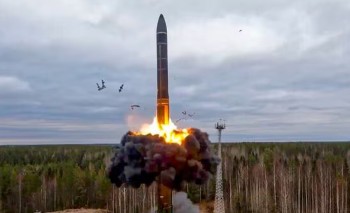 What Makes an ICBM Deadly? Nuclear Warheads, and Catastrophic Impact What Makes an ICBM Deadly? Nuclear Warheads, and Catastrophic Impact The world is shocked by Ukraine's claim that Russia has used an Intercontinental Ballistic Missile (ICBM) in combat for the first time. The devastating scope ... |
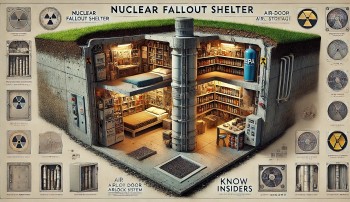 The Safest Places/States in the U.S. to Seek Shelter in Case of Nuclear War The Safest Places/States in the U.S. to Seek Shelter in Case of Nuclear War This article explores the safest places in the United States to seek refuge in the event of nuclear conflict, factoring in geographical isolation, natural barriers, ... |
 Who is Igor Kirillov: Leadership Roles, Assassination, and Net Worth Who is Igor Kirillov: Leadership Roles, Assassination, and Net Worth Ukraine's security service claimed responsibility for killing the head of Russia's chemical, radiological and biological weapons unit, Lt. Gen. Igor Kirillov. |
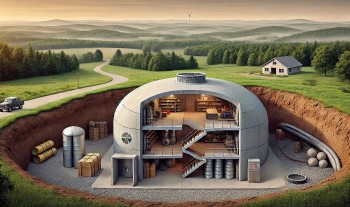 How to Build a Nuclear Fallout Shelter in the U.S. for Maximum Safety - Ultimate Guide How to Build a Nuclear Fallout Shelter in the U.S. for Maximum Safety - Ultimate Guide KnowInsiders provides an overview of the reasons for building a fallout shelter, the safest locations in the U.S., estimated construction costs, and the U.S. government's ... |
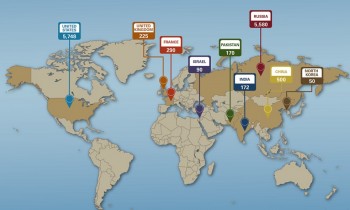 Which Countries Possess Nuclear Weapons in 2025? List of Nations Are Nuclear-Ready Which Countries Possess Nuclear Weapons in 2025? List of Nations Are Nuclear-Ready After Ukraine gave up its nuclear arsenal, nine countries have officially declared possession of nuclear weapons as of 2025. |


